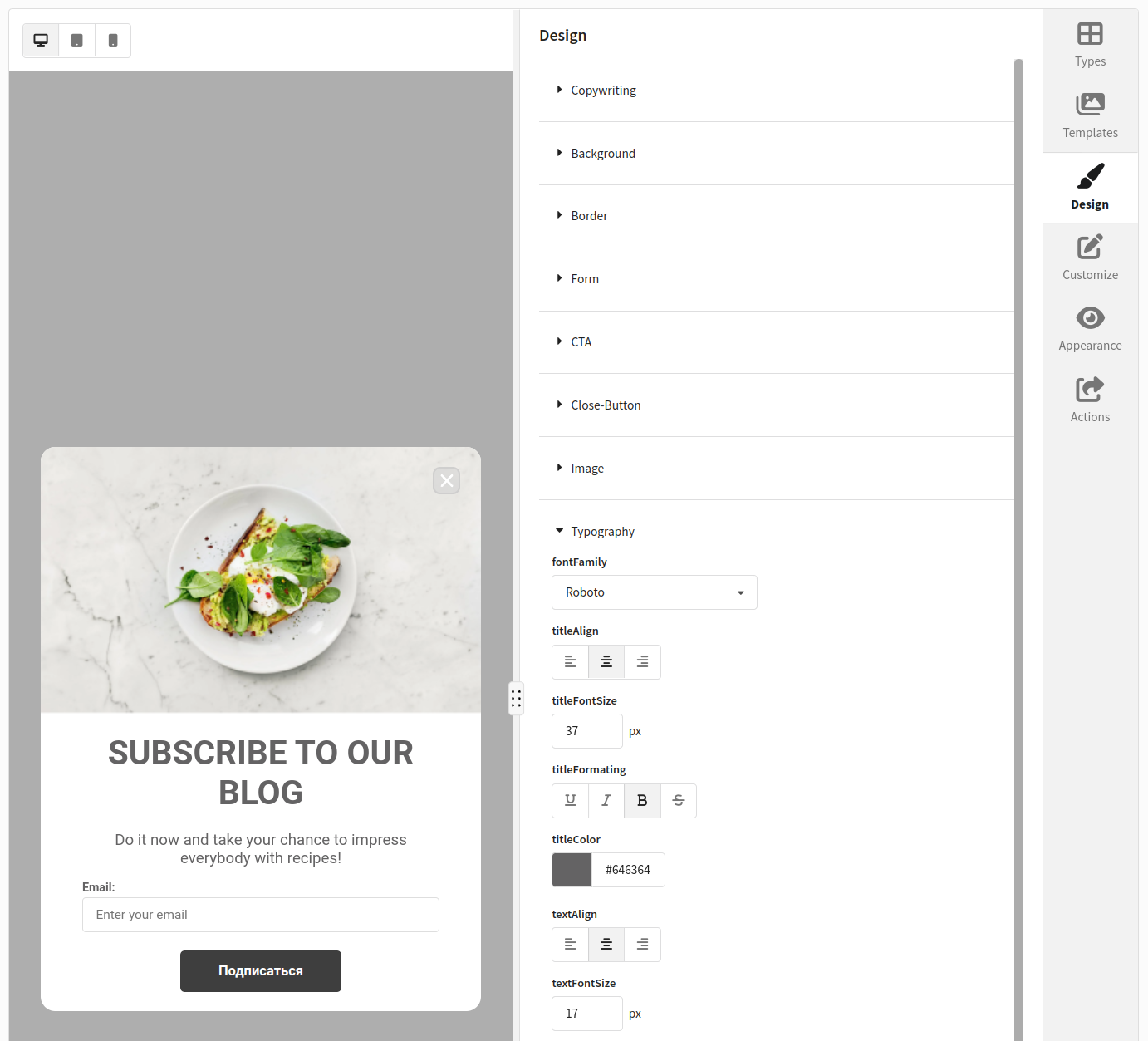v2023.4.66.0 - Altcraft Tag Manager & Popups
Major changes
Changes to the history repository
New columns have been added to the ClickHouse history table. Before updating, follow these steps:
-
Stop the
proceventservice. -
Run the migrator:
Usage:
stat_migrate [flags]
Flags:
--modify_ch_columns modify columns
-h, --help help for stat_migrate
Global Flags:
--config string config path (default "/opt/akd/config/main.json")
Altcraft Tag Manager
A new tool has been introduced in the platform — Tag Manager. With it, you can manage HTML tags and JavaScript code on your website independently, without involving developers. When developing Altcarft Tag Manager, we based it on Google Tag Manager, so if you've worked with GTM before, you'll easily learn the new functionality.
To get started with the Tag Manager, embed the container code on on your website's pages. After installation, all subsequent configurations are done through the platform's interface, without the need to make changes to the source code.
A container is a wrapper that holds tags. A tag is a piece of code that executes on the site under specific conditions. Currently, two types of tags are available: popup and custom HTML. First, you need to add a tag to the container, and then configure a trigger for it.
A trigger is a condition for a tag to fire. Triggers monitor specific events on the site (such as clicks, page loads, or form submissions) and activate tags in response to these events. By default, triggers activate in response to all events of a specific type, but you can target website visitors using variables.

Once you configure tags, triggers, and variables, all that's left is to create a new version of the container and publish it. After that, all changes made will appear on the website.
For more information on configuring the Altcraft Tag Manager, refer to this documentation section.
Popups
We've also introduced the ability to create popups — overlay windows that appear above the main content of a web page. When used strategically, popups can encourage your site's visitors to take specific actions.
There are several types of popups available:
- Modal window positioned in the center of the page.
- Floating panel located at the top or bottom.
- Dropdown window in the lower corner of the site.
- Full-screen popup.
For each type, we've prepared templates with various designs:

Choose any template and use it as a starting point. In the visual editor, you can modify the popup's design, text, and customize form fields:

For those comfortable with coding, a dedicated editor is available:

Popups are effective when they appear at the right moment. We recommend configuring popup display conditions through Altcraft Tag Manager.
You need to link the container to the popup and set up a trigger that will initiate tag execution. For example, if you want visitors to see a popup when they scroll the page to a specific point, you can configure it as shown below. The Page Path variable will limit the trigger's activation: the popup will only appear on pages with URLs containing /shop:

Data from users who fill out the popup form can be imported into the platform's database.
We've also provided tools for popup analytics. You can review statistics on popup views and completions, as well as user responses. For ease of analysis, we've visualized the metrics in a funnel format, helping you assess popup conversion:

In addition to this, popup metrics are now available in the traffic report.
Refer to this documentation section for a guide on how to work with popups in Altcraft Platform.
Image gallery
The image gallery has been updated. Now you can perform bulk operations on gallery items. For example, you can select multiple images and delete or download them. Additionally, to organize the storage of images in the platform, we have added the ability to create folders and enable sorting.

Minor changes
- The "Forms" section has been relocated to the "Weblayers."
- The editor for relations between profiles has been updated.
- Subtypes of suppress events have been added.
- The ability to trace HTTP requests has been added.
Bug fixes
- The export of profile IDs from quick segments now works correctly.
- Panics in proceventgen and campaign have been resolved.
References: PL-10483 PL-10812 PL-10844 PL-11278 PL-11498 PL-11499 PL-11505 PL-11509 PL-11519 PL-11942 PL-12158 PL-12204 PL-12241 PL-12255 PL-12256 PL-12350 PL-12355 PL-12359 PL-12772 PL-12827 PL-12866 PL-12869 PL-12891 PL-12934 PL-13056 PL-13121 PL-13134 PL-13204 PL-13597 PL-13609 PL-13667 PL-13747 PL-13750 PL-13784 PL-13795 PL-13803 PL-13874 PL-13904 PL-14041 PL-14200 PL-14208 PL-14263 PL-14308 PL-14396 PL-14415 PL-14426 PL-14431 PL-14432 PL-14433 PL-14434 PL-14440 PL-14442 PL-14448 PL-14450 PL-14453 PL-14455 PL-14460 PL-14476 PL-14479 PL-14485 PL-14486 PL-14487 PL-14489 PL-14497 PL-14502 PL-14508 PL-14510 PL-14511 PL-14514 PL-14585 PL-14630 PL-14656 PL-14671 PL-14720 PL-14727 PL-14765 PL-8357 PL-9055 PL-9258 PL-9270 PL-9271 PL-9950